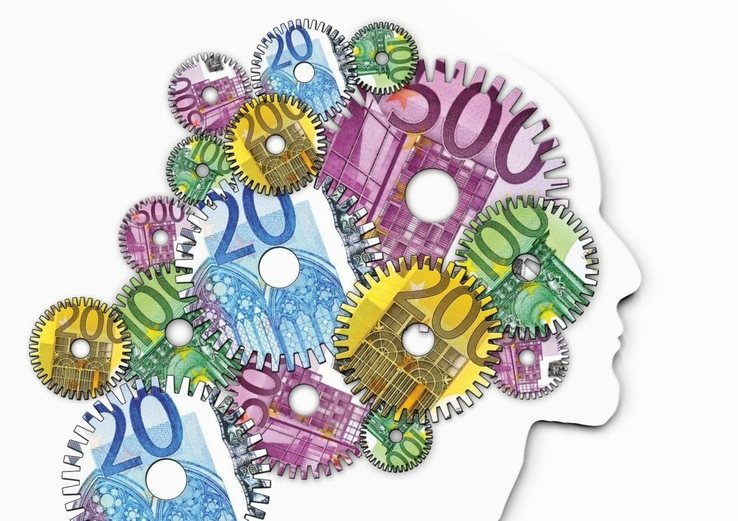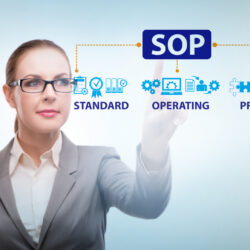In today’s fast-paced business world, the concepts of productivity and efficiency are more crucial than ever.
This comprehensive post delves into the intricate relationship between these two pivotal elements of business success. While productivity is about maximising output, efficiency zeroes in on optimising processes to achieve the best results with minimal waste.
Throughout this post, we explore how businesses can strike a perfect balance between these two, leveraging technology, implementing effective time management strategies, and streamlining processes for optimal performance.
We also address common challenges businesses face in this pursuit and provide practical, innovative solutions. Whether you’re a burgeoning startup or an established enterprise, understanding and applying these principles is key to sustainable growth and competitiveness in the modern marketplace.

Understanding Productivity
Defining Productivity
When we talk about productivity vs efficiency, it’s crucial to understand each term distinctly. Productivity, in its essence, is the powerhouse of business growth. It refers to the amount of work or output produced relative to the input used.
This concept to define productivity isn’t just about working hard; it’s more aligned with working smart. The productivity formula – output over input – captures this essence. It’s about achieving more results with the same or fewer resources, a concept central to labour productivity.
Productivity Measures
There’s no universal yardstick for measuring productivity; it varies across industries. For instance, a sales department gauges productivity by the number of sales closed, reflecting employee productivity.
In contrast, a creative agency might measure it by the innovation and impact of their designs – a qualitative measure of productivity. These productivity measures serve as crucial indicators of a business’s health and growth potential.
Increasing Productivity
To increase productivity, one must adopt a holistic approach. This involves:
- Leveraging technology for efficiency in mundane tasks.
- Implementing time management skills to prioritise and focus efforts.
- Encouraging a culture of continuous learning to enhance employees’ productivity.
These strategies help in boosting productivity without overburdening the workforce, thereby increasing efficiency simultaneously.
Productivity and It’s Relation to Resources
A key aspect of productivity is its relationship with resources. The aim is to produce more with the same amount or fewer resources. This challenges businesses to think creatively and innovate in their processes.
For instance, using automation tools can allow a team to manage multiple tasks effectively without increasing manpower, a direct boost to labour productivity.
Boosting Employee’s Productivity
Enhancing an employee’s productivity isn’t about pushing them to their limits; it’s about optimising their work environment and processes. This includes:
- Providing training to sharpen their skills.
- Implementing tools that streamline time management.
- Creating a supportive work environment that fosters creativity and efficiency.
By focusing on these areas, businesses can witness a significant increase in productivity at an individual level, contributing to overall business growth.
Productivity Levels and Business Growth
There’s a direct link between productivity levels and business growth. As productivity increases, businesses often find themselves on an accelerated growth path. This growth, however, must be managed carefully to avoid sacrificing efficiency. Sustained high productivity can lead to expansion in market reach, better customer satisfaction, and increased profitability.

Exploring Efficiency
Defining Efficiency
Efficiency, often contrasted with productivity in the productivity vs efficiency discussion, zeroes in on the quality and effectiveness of the process.
It’s about achieving maximum productivity with the minimum wasted effort or expense. Efficiency refers to the optimal use of resources to achieve the desired outcome, making it a cornerstone in any efficiency/productivity strategy.
It’s about doing things right, where efficiency measures become vital indicators of operational success.
Efficiency vs. Productivity
While productivity focuses on the amount of output, efficiency concentrates on how that output is achieved. Efficiency productivity is not about just maximising output or doing more work in less time; it is about streamlining processes to reduce waste, whether it is time, resources, or effort. This distinction is crucial in understanding how to increase efficiency in tandem with productivity.
Efficiency in Resource Utilisation
Efficiency shines in its ability to use resources smartly. It’s not just about using fewer resources but about using them effectively.
Efficient usage of resources means minimising waste and maximising output, a principle that applies whether we’re talking about raw materials in manufacturing or time management in service sectors.
Efficiency Measures in Operations
Measuring efficiency is a nuanced affair. It involves analysing processes to identify areas of waste or delay. This could mean assessing the time management skills of employees or evaluating the efficiency example set by a particular department. Tools and metrics for measuring efficiency help in keeping the process lean and goal-oriented.
Efficiency in Various Business Sectors
Efficiency takes on different forms across industries. In a manufacturing setting, it could mean producing the same output with the same resources invested, but in less time. In a service industry, efficiency might be about delivering high-quality service with minimal wait times, thus improving the customer experience.
Increasing Efficiency in the Workplace
To increase efficiency, businesses should focus on:
- Streamlining workflows to eliminate unnecessary steps.
- Implementing automation where possible to handle repetitive tasks.
- Encouraging a culture where employees are trained to identify and suggest efficiency improvements.
These steps not only increase efficiency but also contribute to overall productivity and efficiency.
Efficiency and Time Management
We’ve mentioned time management a few times now, but I wanted to throw this extra piece in for good measure.
Effective time management is a pillar of efficiency. It’s about prioritising tasks, avoiding distractions, and focusing on goals. Effective time management involves prioritising tasks based on their urgency and importance, and setting realistic deadlines.
Techniques like the Eisenhower Box or Pomodoro Technique can significantly increase efficiency and productivity.
That said, time management isn’t just about doing things quickly; it’s about doing the right things in the right order to maximise impact.
Boosting Efficiency without Sacrificing Quality
A critical aspect of efficiency is maintaining a balance with quality. Balancing efficiency means achieving the fastest and most cost-effective methods without compromising on the end product’s quality. This balance is essential to ensure that efficiency gains don’t result in low-quality outputs.
The ultimate goal is to boost efficiency while maintaining or even improving quality. This can be achieved by:
- Adopting technologies that enhance efficiency without affecting output quality.
- Training employees to work smarter, not harder, focusing on time management and efficient usage of tools and resources.
- Regularly reviewing and refining processes to ensure they remain efficient and effective.

Comparing and Contrasting
Direct Comparison of Productivity and Efficiency
In the realm of business, productivity and efficiency often get mentioned in the same breath, yet they are distinct concepts.
Productivity is about the volume of output – think labour productivity or increasing productivity in terms of sheer numbers.
Efficiency, on the other hand, is more about the method – it’s the efficiency formula applied to ensure that resources are utilised most effectively.
Understanding the nuances between productivity focuses and efficiency focuses is crucial for businesses striving for sustainable growth.
Balancing Productivity and Efficiency
Balancing productivity and efficiency involves finding a sweet spot where increasing output through process optimisation doesn’t compromise efficiency or lead to diminished quality and wasted resources.
The interplay between these two is marked by their interdependence; streamlined and efficient processes often result in heightened productivity.
For instance, the strategic use of technology to automate routine tasks not only maximises output from the same resources but also enhances both efficiency and productivity. This approach, which includes removing unnecessary steps or optimising team organisation, is essential for sustaining long-term business success.
The Challenges in Balancing Both
Balancing productivity and efficiency is not without its challenges. It often involves a trade-off – increasing productivity might initially seem to reduce efficiency due to the need for additional training or resource allocation. It’s all just a part of the game, so identifying and navigating these trade-offs is key to achieving a harmonious balance.
Technology’s Role in Productivity and Efficiency
Technology plays a pivotal role in enhancing both productivity and efficiency. From project management tools that track productivity and aid in time management to AI-driven analytics for measuring productivity, technology offers solutions that can transform business operations.
Leveraging tools and technologies is essential for boosting productivity. Between project management software like Monday.com, Asana or Trello, and automation tools such as Zapier, technology can drastically reduce the time spent on administrative tasks.
This adoption of tech tools aligns with improving efficiency as well, as they streamline processes and reduce manual errors. Choosing the right tools can be a game-changer in maximising output and enhancing labour productivity.

Challenges and Solutions
Common Pitfalls in Pursuing Productivity and Efficiency
In the endless quest for productivity and efficiency, businesses often encounter several hurdles to achieve true productivity. One of the most common is the misalignment between team capabilities and business goals, leading to either low efficiency or low productivity. Another pitfall is the overemphasis on quantitative output, sometimes at the cost of quality, leading to low-quality outputs. Additionally, businesses might face challenges in adapting to new technologies or processes, which can temporarily hinder productivity levels.
Overcoming Obstacles in Increasing Productivity
To overcome obstacles in increasing productivity, businesses need to:
- Ensure clear communication of goals and expectations.
- Provide adequate training and resources to employees.
- Implement continuous improvement practices to identify and address productivity bottlenecks.
- Embrace a culture of flexibility and innovation, allowing for new methods to boost productivity.
Strategies to Avoid Sacrificing Efficiency
Nobody wants to sacrifice efficiency in the pursuit of higher productivity, so avoiding this is crucial. This can be achieved by:
- Maintaining a balance between quantity and quality of work.
- Regularly reviewing and optimising processes to ensure they are as streamlined as possible.
- Encouraging employee feedback to identify areas where efficiency might be compromised.
- Using efficiency measures to track and improve process performance continually.
Maintaining Consistent Results
Maintaining consistent results while striving to improve productivity and efficiency requires a focused approach. This involves setting realistic, achievable goals and tracking progress regularly.
It also means being adaptable and ready to adjust strategies in response to changing circumstances. Consistency is achieved through continuous monitoring and refining of both processes and output.
Avoiding Burnout While Boosting Productivity
Avoiding burnout is a critical aspect of sustaining long-term productivity. This can be addressed by:
- Promoting a healthy work-life balance.
- Encouraging regular breaks and vacation time.
- Providing support for mental health and stress management.
- Recognising and rewarding hard work and achievements to keep morale high.
Solutions to Low-Efficiency Issues
Addressing low-efficiency issues involves a systematic approach. This might include:
- Conducting a thorough business analysis of current processes to identify inefficiencies.
- Implementing technology solutions where manual processes are causing delays.
- Training staff in time management skills and efficient working methods.
- Reallocating resources to ensure optimal utilisation.
Improving Efficiency in Team Environments
Improving efficiency in team environments requires a focus on communication, collaboration, and process optimisation. This might involve:
- Regular team meetings to ensure alignment and efficiency.
- Training sessions to enhance time management skills and process understanding.
- Implementing collaborative tools to streamline communication and project tracking. Such measures can significantly improve team dynamics, leading to better efficiency and productivity.

Piecing It All Together
As we reach the end of our deep dive into productivity vs. efficiency, its clear that the journey towards achieving both is intricate yet rewarding. Productivity focuses on maximising output, while efficiency zeroes in on optimising processes. The key lies in striking a balance, ensuring that efforts to enhance one do not detrimentally impact the other.
The bottom line in this balancing act is straightforward yet profound.
A business that masters the art of juggling productivity and efficiency sets itself up for sustainable growth and competitive advantage.
Its not just about doing more in less time; its about doing it smarter, better, and with greater foresight.
Key Takeaways
From our discussion, several key takeaways emerge:
- Both productivity and efficiency are vital for business success but require different strategies and mindsets.
- Time management skills play a crucial role in enhancing both efficiency and productivity.
- Technology can be a powerful ally in this quest, but it must be leveraged wisely.
- Balancing high-quality work with high productivity is essential for long-term success.
- Regularly reviewing and adapting strategies is key to maintaining the balance.
Frequently Asked Questions About Efficiency vs. Productivity
What is the difference between efficiency and productivity?
Efficiency and productivity, while often used interchangeably, have distinct meanings in a business context. ‘Productivity’ is about the volume of output generated from a given input – think in terms of quantity. On the flip side, ‘efficiency’ is about how well you’re using your resources to achieve that output – it’s more about the quality of the process. In short, productivity is the “what” and efficiency is the “how.”
Is it better to be efficient or productive?
That’s like asking whether it’s better to have a fast car or a fuel-efficient one – it really depends on your needs. In business, you ideally want a blend of both. High productivity without efficiency can lead to resource wastage, while high efficiency without productivity might not yield enough output. The golden ticket is finding the right balance.
What is the difference between performance and productivity?
Performance in a business setting often refers to the effectiveness and quality of an employee’s work, while productivity specifically measures the amount of output produced.
How do you measure productivity and efficiency?
Measuring productivity often involves calculating the ratio of output to input (like sales per employee). Efficiency, on the other hand, is measured by analyzing how well resources are utilised for the output (like time spent on producing a unit). Both require tracking specific metrics relevant to your business.
What is the formula for productivity and efficiency?
The formula for both efficiency and productivity is Output over Input.
How much total output do you get compared to the input? When you’re thinking ‘input’, think materials, labour, etc.
Are productivity and efficiency the same? True or false?
False. They are related but distinct concepts. Productivity is about the amount of output, while efficiency is about how well resources are used to produce that output.
What is the difference between productivity, efficiency, and effectiveness?
Productivity is about how much you produce. Efficiency is about how economically you produce (input vs. output).
Effectiveness, however, is about doing the right things – it measures whether the output is meeting the intended goals. In essence, it’s possible to be productive and efficient, but not effective if the output doesn’t align with the business objectives.









